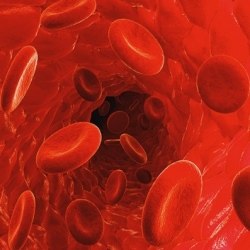
Researchers have had success in mice using nanodiscs to deliver a therapeutic vaccine for the treatment of colon and melanoma cancer tumors. "We are basically educating the immune system with these nanodiscs so that immune cells can attack cancer cells in a personalized manner" said James Moon.
Personalized immunotherapy is a fast-growing field of research in the fight against cancer. The therapeutic cancer vaccine employs nanodiscs loaded with tumor neoantigens, which are unique mutations found in tumor cells. By generating T-cells that recognize these specific neoantigens, the technology targets cancer mutations and fights to eliminate cancer cells and prevent tumor growth.
Unlike preventive vaccinations, therapeutic cancer vaccines of this type are meant to kill established cancer cells.
"The idea is that these vaccine nanodiscs will trigger the immune system to fight the existing cancer cells in a personalized manner," Moon said.
The nanodisc technology was tested in mice with established melanoma and colon cancer tumors. After the vaccination, twenty-seven percent of T-cells in the blood of the mice in the study targeted the tumors.
When combined with immune checkpoint inhibitors, an existing technology that amplifies T-cell tumor-fighting responses, the nanodisc technology killed tumors within 10 days of treatment in the majority of the mice. After waiting 70 days, researchers then injected the same mice with the same tumor cells, and the tumors were rejected by the immune system and did not grow.
"This suggests the immune system ‘remembered’ the cancer cells for long-term immunity," said Rui Kuai, U-M doctoral student in pharmaceutical sciences and lead author of the study.
"The holy grail in cancer immunotherapy is to eradicate tumors and prevent future recurrence without systemic toxicity, and our studies have produced very promising results in mice," Moon said.
The technology is made of extremely small, synthetic high density lipoproteins measuring roughly 10 nanometers. By comparison, a human hair is 80,000 to 100,000 nanometers wide.
"It’s a powerful vaccine technology that efficiently delivers vaccine components to the right cells in the right tissues. Better delivery translates to better T-cell responses and better efficacy," said study co-senior author Anna Schwendeman, U-M assistant professor of pharmacy.
The next step is to test the nanodisc technology in a larger group of larger animals, Moon said.
